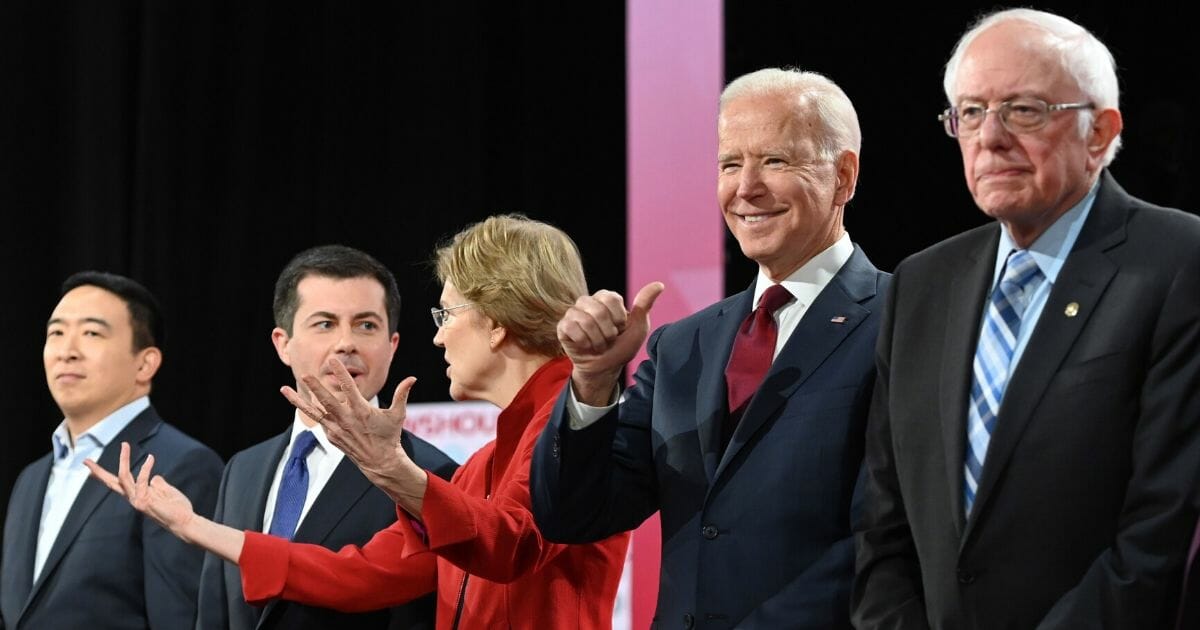
Democrats' Convoluted New Rules Could Cause Caucus Night Confusion in Iowa
For the first time, the Iowa Democratic Party will report three sets of results from the party’s presidential caucuses — and there is no guarantee that all three will show the same winner.
Each set of results will represent a different stage of the caucus.
The new rules for the Feb. 3 contest were mandated by the Democratic National Committee in a bid to make the process more transparent.
In the past, Iowa Democrats reported only one set of results: the number of state convention delegates won by each candidate through the caucus process.
Democrats choose their party’s eventual White House nominee based on national convention delegates, and the state delegates are used to determine those totals in Iowa.
The Associated Press will declare a winner in Iowa based on the number of state delegates each candidate wins. The AP will also report all three results.
Q: What results will Iowa Democrats release out of the caucus?
A: There will be three sets of results: tallies of the “first alignment” of caucus-goers, their “final alignment” and the total number of State Delegate Equivalents each candidate receives.
This is the first time the party has made public the first and final alignment results.
Q: What do those categories mean, and how will the results be determined?
A: Caucuses are different from primaries. In a primary, voters go to the polls, cast their ballots and leave. At a caucus, voters gather at local precincts and declare support for their chosen candidate — then some have an opportunity to switch sides.
In Iowa, voters arriving at their caucus site will fill out a card that lists their first choice. Those results will be tabulated and will determine the results of the “first alignment.”
But that’s not the end of the night.
Caucus-goers whose first-choice candidate fails to get at least 15 percent of the vote can switch their support to a different candidate. The threshold can be higher at some precincts. If voters don’t choose another candidate, their vote won’t count in the final alignment. They can choose “uncommitted” — but that choice only gets reported if it, too, gets at least 15 percent of the vote.
The results of this stage will be tabulated to determine the caucuses’ “final alignment.” Only candidates who receive at least 15 percent of the vote at that precinct — the so-called viable candidates — will be counted in the final alignment. Non-viable candidates get zero votes in the final alignment.
There’s one more step.
The final alignment votes are then used to calculate the number of state convention delegates awarded to each candidate. The party calls these state delegate equivalents because they represent the number of delegates each candidate will have at the party’s state convention in June. That, in turn, determines how many national convention delegates each candidate receives.
Iowa will award 41 pledged delegates to the Democratic National Convention based on the results of the party caucuses.
Q: Who will the AP declare the winner of the Iowa caucuses?
A: The AP will declare the winner of the Iowa caucuses based on the number of state delegate equivalents each candidate receives.
That’s because Democrats choose their overall nominee based on delegates. The other results will provide valuable insights into the process and the strength of the various candidates, but the state delegate equivalents have the most direct bearing on the metric Democrats use to pick their nominee.
Iowa and national Democratic Party figures also emphasize this is the number to watch.
Q: Could different candidates top each of the three categories of results?
A: Yes.
For example, Candidate A could beat Candidate B in the first alignment voting. But Candidate B could get more support from voters who initially voted for non-viable candidates. After those voters switch to a different candidate, Candidate B could end up with the most votes in the final alignment.
The final alignment votes are used to calculate the state delegate equivalents, so the results should be similar.
However, in a very close race, it is mathematically possible to have different winners there, too.
There’s no possible way this will create any confusion over the results of the #iowacaucus (rolls eyes). #iacaucus2020 #iacaucus #decision2020 #dumpsterfire https://t.co/cX6WBSjd0v
— Tyler Vincent (@TylerVi49485280) January 16, 2020
Q: Why are Democrats making this change?
A: The new rules were mandated by the DNC as part of a package of changes sought by Sen. Bernie Sanders of Vermont following his loss to former Secretary of State Hillary Clinton in the 2016 presidential primaries.
The changes were designed to make the caucus system more transparent and to make sure that even the lowest-performing candidates get credit for all the votes they receive.
It’s not just Iowa that is affected by the changes. The Nevada Democratic caucuses on Feb. 22 will also report three sets of results.
The Western Journal has reviewed this Associated Press story and may have altered it prior to publication to ensure that it meets our editorial standards.
Truth and Accuracy
We are committed to truth and accuracy in all of our journalism. Read our editorial standards.
Advertise with The Western Journal and reach millions of highly engaged readers, while supporting our work. Advertise Today.












